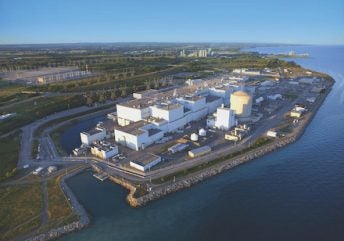
Candu Energy, an AtkinsRéalis company, has signed a memorandum of understanding with Atomic Energy of Canada Ltd (AECL), a federal Crown corporation, and Canadian Nuclear Laboratories (CNL), which manages and operates Canada’s premier nuclear science and technology organisation for AECL, to co-operate on the upgrading and production of heavy water for the commissioning and operation of new Candu nuclear reactors in Canada.
“This collaboration among important stakeholders in the Canadian nuclear sector sets the stage for Canada to lead the global heavy water market, solidifying its role as a key player in the energy transition,” commented Ian L. Edwards, president and CEO, AtkinsRéalis. “With Candu reactors operating across four continents, a global nuclear new build market with expected demand in excess of 1,000 new reactors, a strong Candu reactor refurbishment market, and the introduction of the new Candu Monark 1000 MW reactor in addition to the existing Enhanced Candu 6, this MoU could not have come at a better time.”
The MOU brings together AtkinsRéalis’ nuclear and industrial capabilities in Canada as the licensee of Candu technology, as well as AECL, owners of the intellectual property, and other heavy water production technologies, and CNL, a prominent company with extensive experience in heavy water technologies. The objective is to evaluate options and select cost efficient, environmentally responsible, and viable heavy-water production technologies, which could include the establishment of industrial scale heavy-water production facilities to support the deployment of a new fleet of Candu reactors.
Heavy water is used as a moderator and coolant in Candu reactors. It is a differentiating factor in nuclear reactor design that is said to allow the technology to be very safe, but also allows the reactor to utilise unenriched uranium as its fuel source; something no other modern nuclear reactor can do. However, heavy water has not been produced in Canada for over 25 years, and there are currently no large industrial scale heavy water production capabilities in the Western world that will meet the supply needed for a new fleet of reactors. This is especially true as Canada has ambitious nuclear build out plans, with the country being one of many to have committed to tripling nuclear output by 2050 and the province of Ontario alone having an estimated future need for 18 GW of new nuclear power by 2050.
Image: Darlington nuclear generating station in Ontario currently operates four Candu reactors






